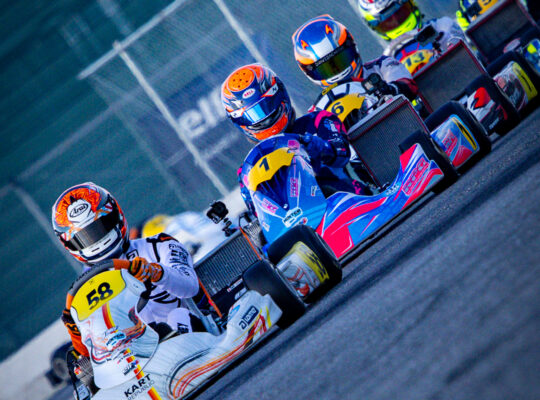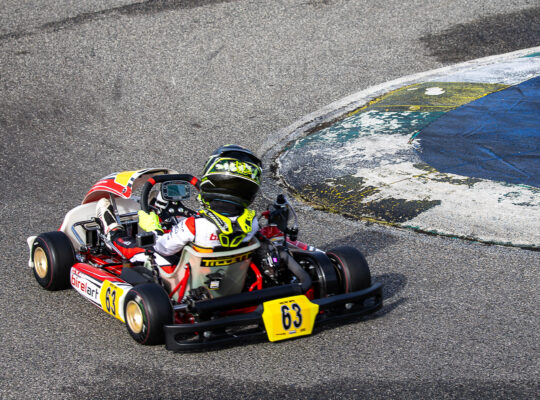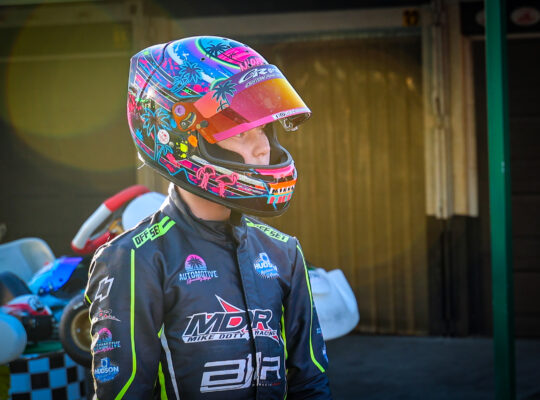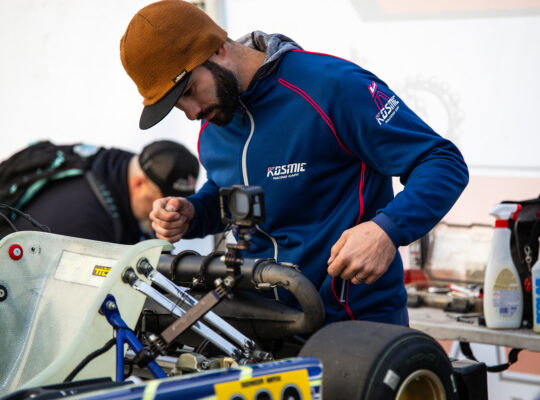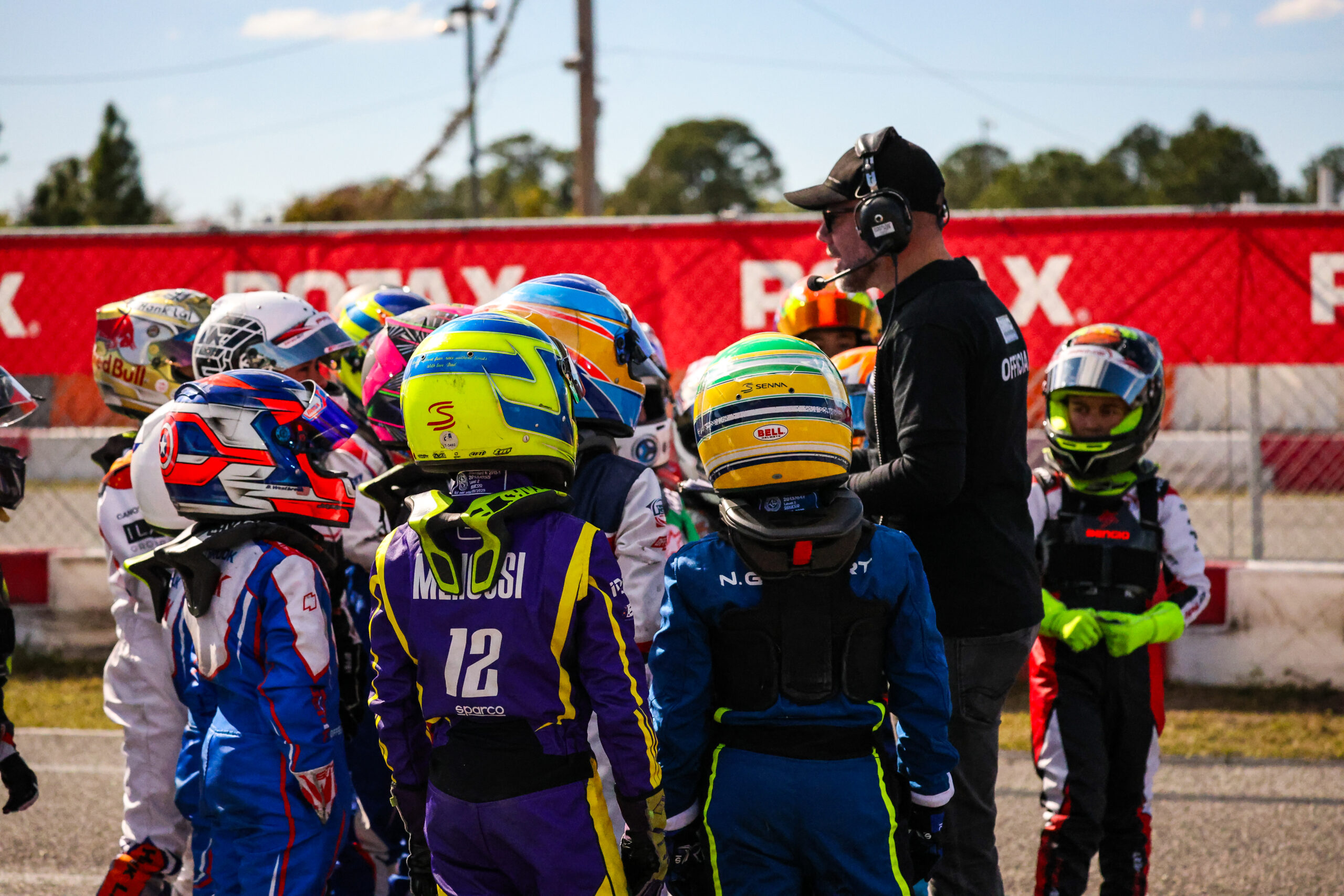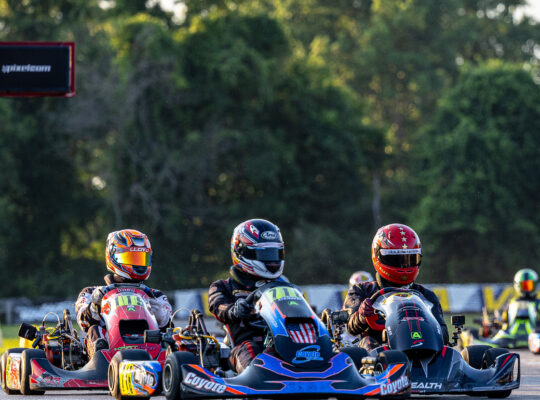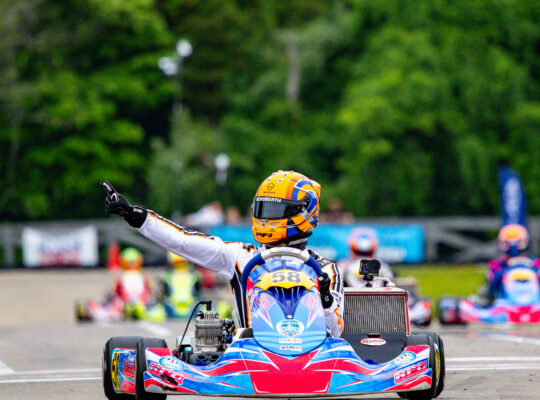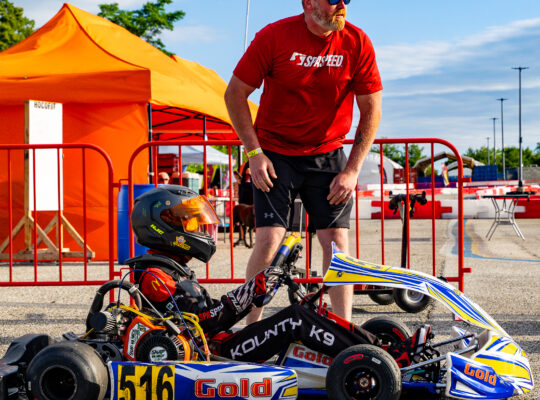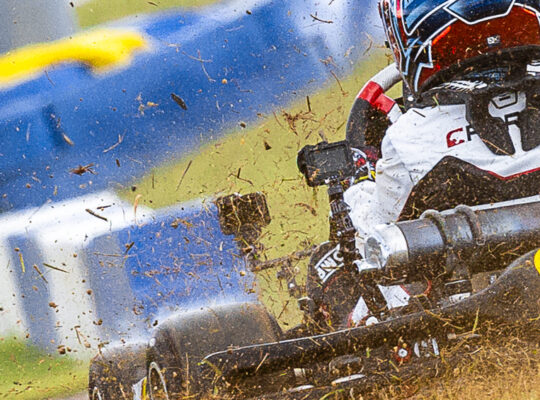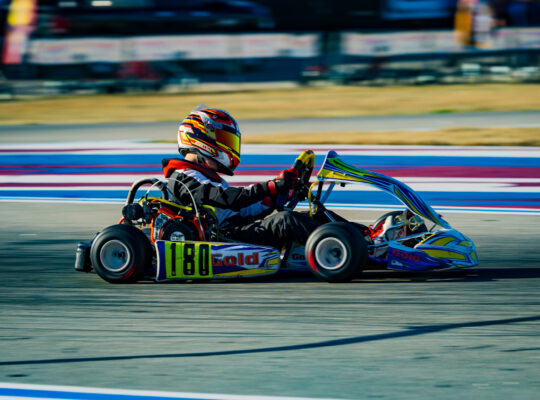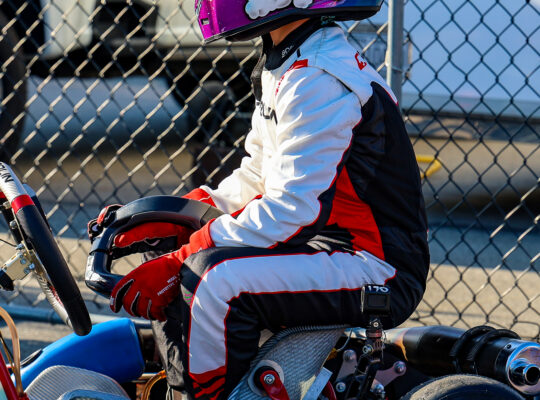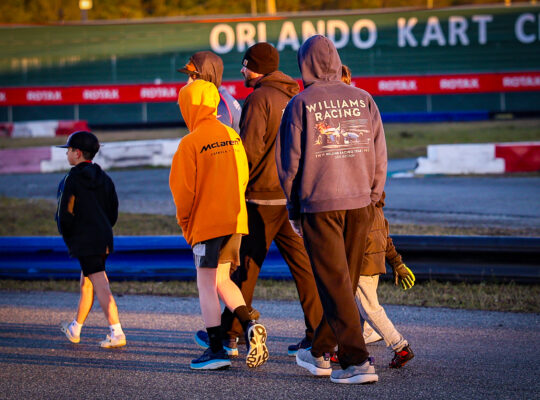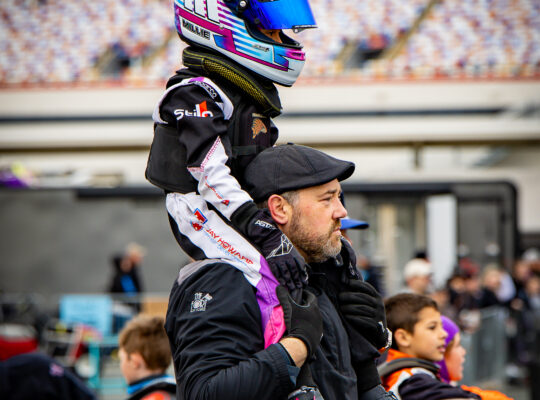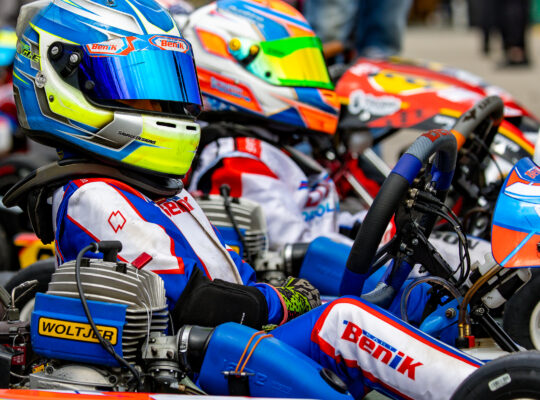Your first kart race is a big deal. Nerves. Noise. Pressure. And a lot of unknowns.
But once you’ve done one, it starts to feel more natural. Below is a general view into what you may expect and experience at your first race so you (or your kid) can show up ready, not overwhelmed.
1. Expect an early start
Most club or regional race days kick off early. Plan to arrive by 6:30 or 7 a.m. You’ll need time to unload your kart, set up your pit space, get your wristband, and check the schedule.
Pro tip: Being early means fewer surprises.
2. Registration and tech inspection
When you arrive, you’ll register at race control — this is where you get your driver band, sign your waiver and confirm your class entry. Then it’s on to tech inspection. Officials will check your kart and your safety gear to make sure everything meets the rules (especially your tires, engine seals, fuel, and helmet certification).
Bring: Race license (WKA, IKF, SKUSA, etc.), transponder, and all your gear — suit, gloves, helmet, neck collar, rib vest (if required).
3. Drivers’ meeting
In most series, there’s a mandatory drivers’ meeting. They’ll cover rules of the day, schedule changes, flag procedures, and conduct. This is where you’ll get told about any special track conditions or safety reminders. Pay attention — missing this can get you DQ’d.
4. Practice and qualifying
Race weekends usually start with practice sessions for the first day. This is your chance to get used to the track and get your kart dialed in. After that, some events go straight to qualifying; others set grids based on random draw or heat points.
If it’s your first time: Focus on learning the line and building confidence. You’re not proving anything in your first practice.
5. Heat races and main
Most US karting formats use heat races to determine grid positions for the main event. You might get two or three heats depending on the series, followed by a pre-final and final — or just one main.
Heats are short, fast, and competitive. The final is where it all counts.
6. Downtime between sessions
There’s more waiting around than most first-timers expect. Use that time to go over your kart, top off fuel, swap tires if needed, hydrate, eat something, and review how the last session went. Bring a tool kit, tire pressure gauge, and a game plan.
7. The paddock is busy, but helpful
Yes, it’s loud. Yes, people are rushing. But most teams and families are friendly — especially at local and regional events. Don’t be afraid to ask questions or let someone know it’s your first time. Most folks will be glad to help you get settled.
Also: Make sure you know where to get fuel, tires, and parts at the track in case you need something last-minute.
8. Wrapping up the day
After the final race, make sure you return your transponder (if rented), check results at the board, and clean up your pit area. If there are trophies or podiums, they’re usually held shortly after the last class finishes.
Whether you win or not, take a few minutes to go over what went well and what didn’t. That’s how you improve.
Final word
Your first kart race is about learning, not winning. You’re building race experience, figuring out how things work, and getting used to the pressure of competition. Nerves are normal. Mistakes are part of it. Just stay focused, ask questions, and keep showing up.
You’ll be surprised how fast you start to feel like you belong.
Sources
This article is based on firsthand experience at US karting events, including club and regional races sanctioned by SKUSA, USPKS, WKA, and IKF. It reflects typical race-day structure and expectations from venues across the US like GoPro Motorplex, New Castle Motorsports Park, and local tracks nationwide.

